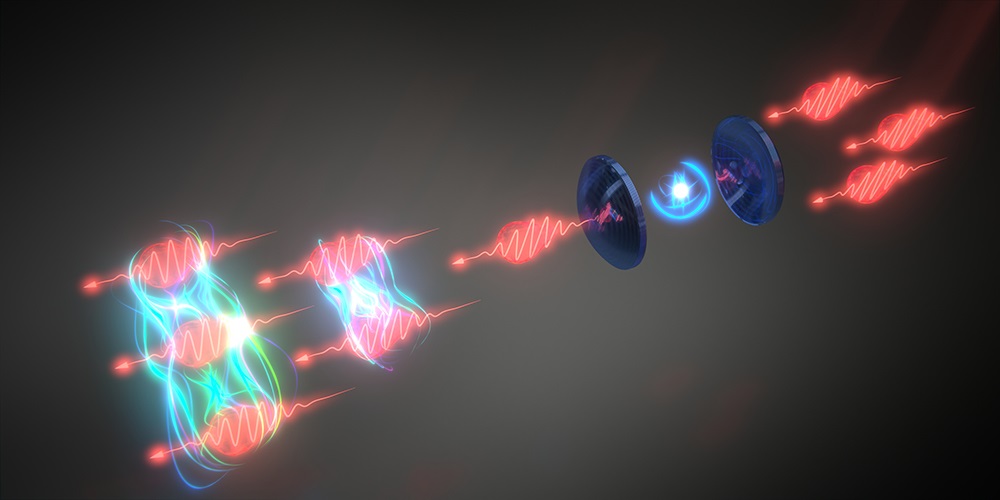21 March 2023
Light particles, also called photons, do not normally interact with each other. An international research team has now demonstrated for the first time that a few photons can be manipulated and made to interact in a controlled manner. This could advance both medical imaging and quantum computing.
Photons do not interact with each other in a vacuum: they fly through one another undisturbed. This makes them valuable for data transfer because information can be transported at the speed of light almost without interference. Light is useful not only for data transmission, but also in certain measuring instruments because it can be used to determine tiny distances, for example in medical imaging. The sensitivity of such instruments depends on the average number of photons in the system.
Even though photons do not interact with each other, they do interact with materials, for example when they pass through glass. This interaction is normally independent of the intensity of the light. Only when very high energy laser light is used does the intensity affect the interaction.
Such an intensity effect for just two photons is described by a team from the University of Basel, the University of Sydney and the Ruhr-Universität Bochum in the journal Nature Physics. They demonstrated that a single photon flew through their measuring instrument more slowly than two photons.
To manipulate light in this way, the team created a cavity in a semiconductor to trap the photons. The cavity also contains an artificial atom, a so-called quantum dot. When two independent photons enter the system they emerge in a highly correlated “entangled” state.
Improved resolution and sensitivity
Such entangled quantum light in principle enables more sensitive measurements with higher resolution. Because the technique is based on a small number of photons, it would also be advantageous for light-sensitive samples, such as those often found in biological microscopy, where the structures to be resolved are also very small. The researchers hope their experiments represent the first step in making this source of quantum light useful for applications.
The quantum dots were made by the team led by Dr. Arne Ludwig at the Ruhr-Universität Bochum. The experiments were performed by the group led by Dr. Natasha Tomm and Prof. Dr. Richard Warburton at the University of Basel. Dr. Sahand Mahmoodian of the University of Sydney and Leibniz Universität Hannover laid the theoretical groundwork.
The work was supported by the Swiss National Science Foundation, the European Union under the Horizon 2020 Program, the University of Basel Research Fund, the German Research Foundation, the German Federal Ministry of Education and Research, and the Australian Research Council and ARC Centre of Excellence in Engineered Quantum Systems.
This article is based on a press release by the Ruhr-Universität Bochum.
Original publication
Natasha Tomm, Sahand Mahmoodian, Nadia O. Antoniadis, Rüdiger Schott, Sascha R. Valentin, Andreas D. Wieck, Arne Ludwig, Alisa Javadi, Richard J. Warburton
Photon bound state dynamics from a single artificial atom
Nature Physics (2023), doi: 10.1038/s41567-023-01997-6













